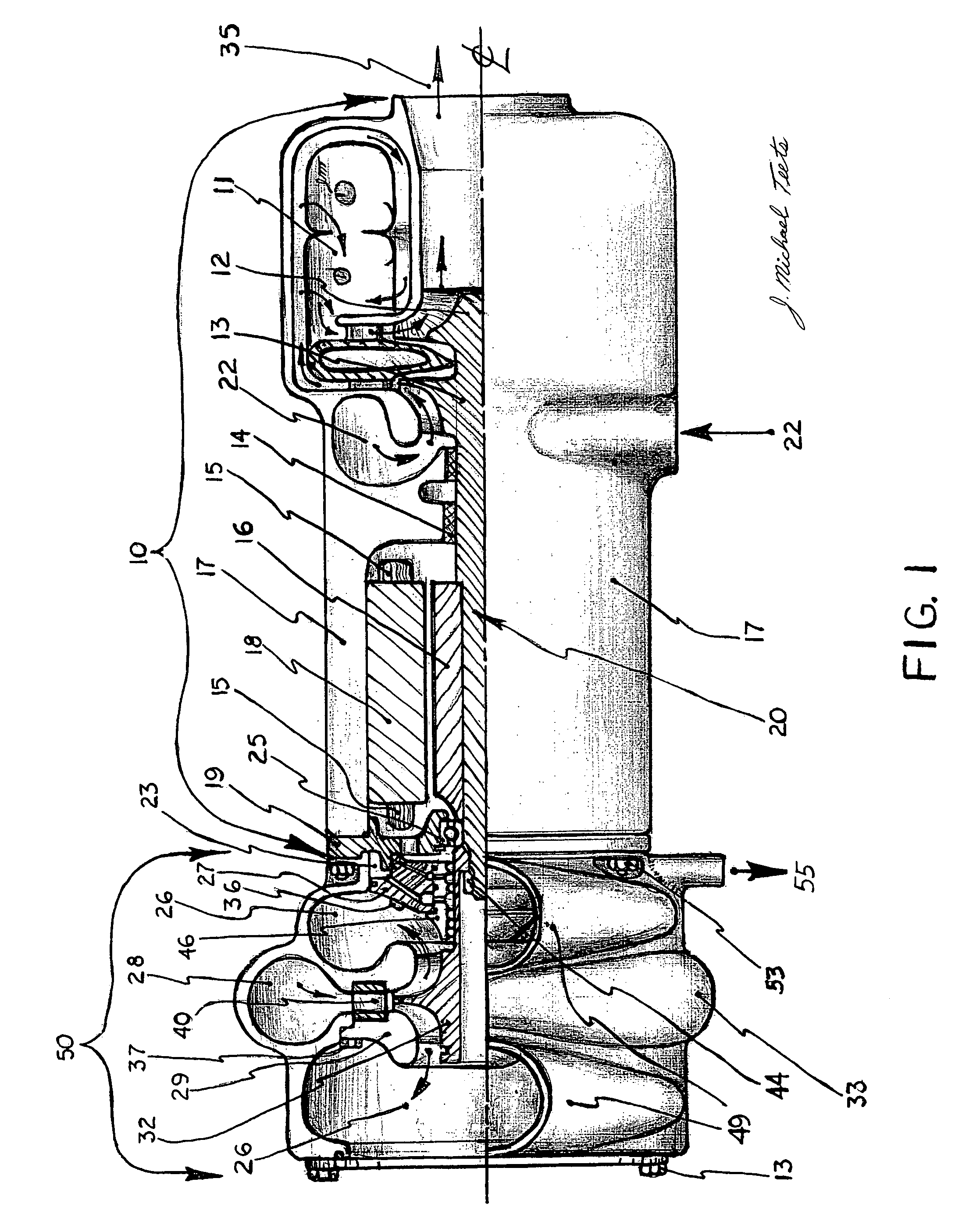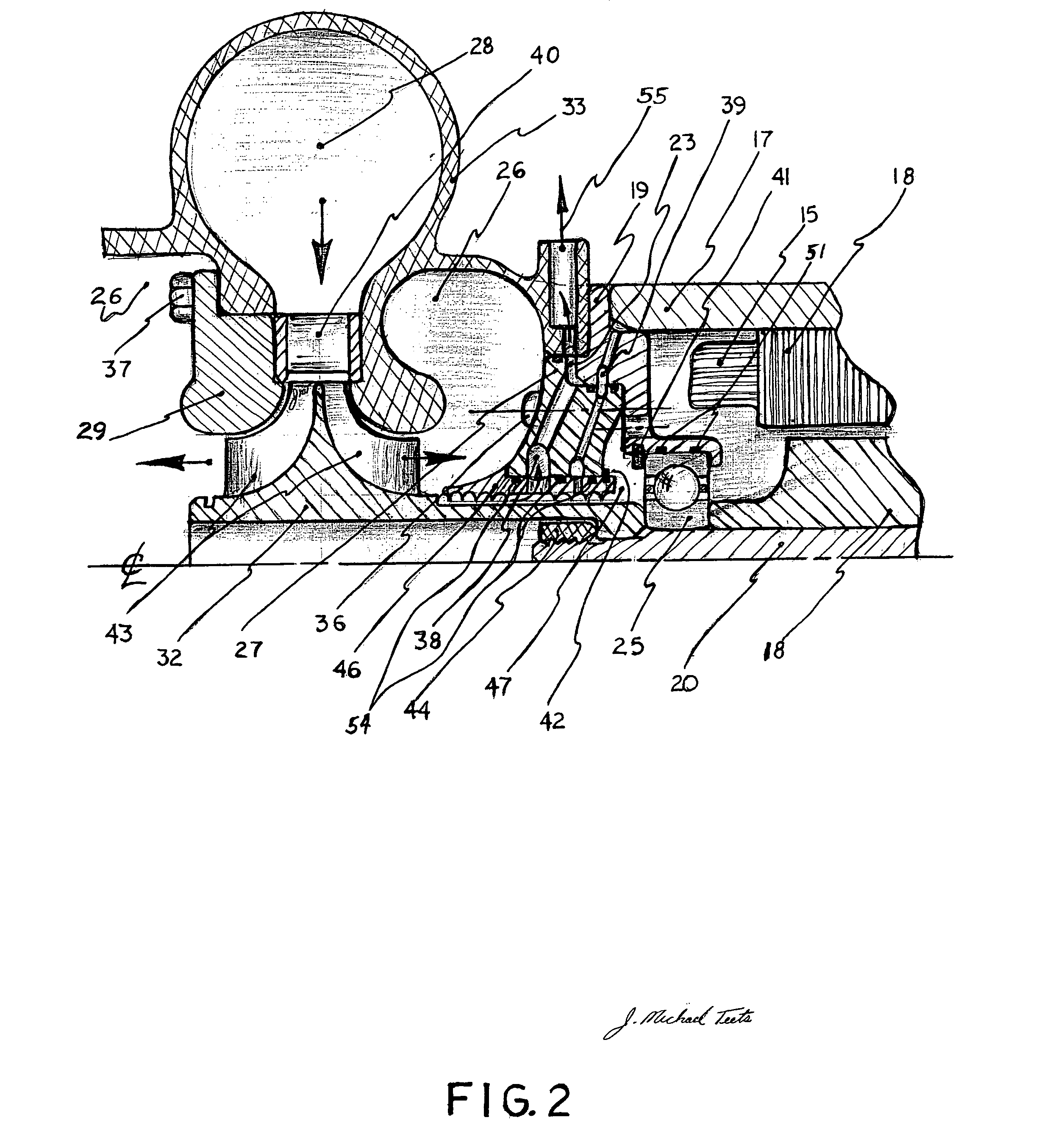Rankine-microturbine for generating electricity
a micro-turbine and power generation technology, applied in the direction of electric generator control, machines/engines, mechanical equipment, etc., can solve the problems of high maintenance cost of power plants, too complex and expensive for smaller power plants, and low electrical output power efficiency for opportunities in main power applications, etc., to achieve high electrical output power efficiency, reduce installation cost, and reduce emissions. the effect of co2 emission
- Summary
- Abstract
- Description
- Claims
- Application Information
AI Technical Summary
Benefits of technology
Problems solved by technology
Method used
Image
Examples
Embodiment Construction
[0024]Turning now descriptively to the drawings, in which similar reference characters denote similar elements throughout the several views, the attached figures illustrate a Rankine-Microturbine system, which comprises a Microturbine or Hybrid-Microturbine, a Steam Turbine Seal, a Steam Turbine Seal Support, a Steam Turbine Housing, a Steam Turbine Nozzle, a Steam Turbine Rotor, a Steam Turbine Shroud, and Steam Housing Cap. The Microturbine has one gas turbine rotor—compressor rotor—alternator rotor assembly spool with retained rotor magnet that are positioned coaxially within an electrical stator for electric power. A Hybrid-Microturbine is a microturbine without a turbine exhaust heat exchanger and incorporates a turbocharger to extract energy from the microturbine exhaust for a multistage high pressure engine compressor. The Steam Turbine Seal is a static device that prevents exhaust steam from entering the rotor spool bearing cavity and minimizes the steam leakage past the ste...
PUM
 Login to View More
Login to View More Abstract
Description
Claims
Application Information
 Login to View More
Login to View More - R&D
- Intellectual Property
- Life Sciences
- Materials
- Tech Scout
- Unparalleled Data Quality
- Higher Quality Content
- 60% Fewer Hallucinations
Browse by: Latest US Patents, China's latest patents, Technical Efficacy Thesaurus, Application Domain, Technology Topic, Popular Technical Reports.
© 2025 PatSnap. All rights reserved.Legal|Privacy policy|Modern Slavery Act Transparency Statement|Sitemap|About US| Contact US: help@patsnap.com



